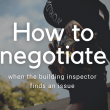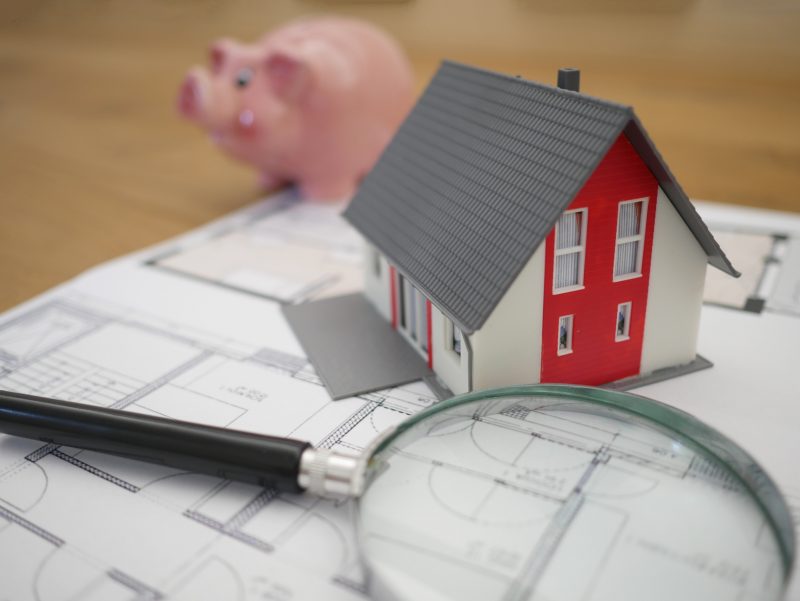Updated June 2020.
Many of you will have experienced the feeling of seeing a home you like, getting excited about it, imagining your future there and then having your dreams shattered when you obtain a builders report and find they are recommending what can often be tens of thousands of dollars worth of urgent work required to your dream home.
You have scrimped and saved and sacrificed to put together your deposit and now someone is telling you to spend massive amounts of money you don’t have on a house you haven’t even lived in yet. It is natural and understandable to throw your hands up in frustration at this point and be ready to give up.
While some problems are just too expensive or too scary for you to fix, what I want to share with you here are some tips on how to keep things in perspective. How to look at problems and then approach trying to find a solution to issues raised by a building inspection report.
Audio version:
Be sure to follow the podcast on Spotify.
Tip 1: Prepare yourself before you start reading.
Keep in mind that a building inspectors job is to go over the house with a fine toothcomb and find everything that might possibly be wrong or less than ideal with the property. They can get in a lot of trouble if they miss anything so they will be extremely conservative and make a big effort to note any small imperfections.
You need to keep in mind they are not there to tell you any good things about your future home. As a first home buyer, you are aching for reassurance that you are doing the right thing and not making a bad decision. You will not get this reassurance from a builders report. Instead, reading any builders report will seriously test your resolve to buy.
Tip 2: Finding Perspective.
I am yet to see a builders report that is squeaky clean. Most reports find situations that are less than ideal and will cost thousands to change or fix. Yet at the same time we see so many houses sell every week – so how does this all come about? Are the houses that sell all in perfect condition? Or is it that the buyers of those houses have come to accept that the perfect house just doesn’t exist? You need to ask the following questions when reviewing any comment made by a builder…
Do I even care about this issue? Will it keep me up at night?
Is this a common problem? Eg. If I visited my parents/friends house would they likely have things like this happening as well?
Does it need to be fixed urgently? Eg. Do I need to deal with it now? Or can it wait 1 year, 3 years, or 5 years?
As an example, I have lost count of the number of times I have seen buyers negotiate a change in the purchase price to cover the cost of an “urgently needed new roof” only to drive past that home 4 years later and still see the same old roof going strong. When you are buying a house it is an emotional time and issues can seem monumental. But once you move in you often find yourself accepting things just as they are and tell yourself “Why spend money on a new roof if the old one doesn’t have holes in it?”
Tip 3: Translate builder-speak.
Being a building inspector is a tough job, I feel for them. If they under-estimate a problem they can end up with very upset customers. They can’t see through walls, so please understand that they will usually frame things in the worst possible way to rightly cover themselves in the unlikely event of a problem being bigger than they estimated.
Keep this in mind when reading the report and don’t hesitate to call and speak to the builder, as when issues are discussed verbally they often sound a lot less frightening than when they are written down. Also, different builders will have wildly different opinions on the same issue so if you feel something is being over-dramatized then getting a second opinion is often worthwhile.
Bonus tip: Meet the builder on-site at the end of their inspection to discuss and sight any important issues. You are about to make a massive investment and it is worth taking an hour off work to get there (incredibly, 95% of first home buyers don’t do this).
Tip 4: Ask the builder for a price estimate.
An inspector will often have building experience and they can sometimes provide a rough estimate of the cost to fix any issue found in the report.
Ask the building inspector…
If this was your Grandmothers home? (or similar) Would you change anything? What would you do to rectify this? How much is that solution likely to cost?
Tip 5: Prepare yourself for common issues.
Many of the houses we sell were built in the 60’s & 70’s. Often the roof will be original (those old iron roofs were pretty darn solid). Often a previous owner has excavated a little too eagerly under the house and exposed more of the piles than they should have. There may be signs of borer holes underneath the house or in doorways. Retaining walls may have moved or settled over time. If renovations were completed in the 1980’s there may be dux quest plumbing (the infamous black pipe).
Seek clarification on how bad the situation is, whether it is dangerous, how soon you need to get it seen to and how much it will cost to fix.
Most importantly, remind yourself why you liked the house in the first place. Remember that all houses will have issues, especially if they are 50+ years old and it is often a matter of figuring out just how many you can live with.
Photo by Tierra Mallorca on Unsplash










Have to agree, full knowledge of your proposed purchase is invaluable.
Well said – spot on ?
People spend thousands on their cars every year but seize up with fear if they have to spend money on their house…